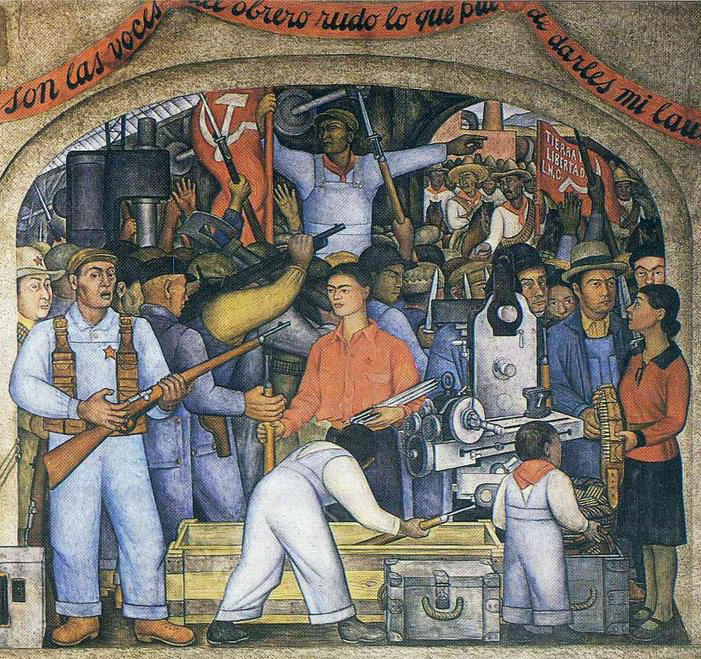Undergraduate Seminar Art & Revolution: Mexican Murals

This seminar takes an in-depth look at the period known as the "Mexican Renaissance," during which numerous artists, writers, and intellectuals responded to the successes and failures of the Mexican Revolution (1910-1920). The postrevolutionary government hired artists to create murals on public and government buildings in the hopes of developing a Mexican national consciousness and promoting the ideals of the Revolution (such as the redistribution of land and increased access to education). The medium of mural painting was embraced as a popular alternative to the "aristocratic" format of easel painting, while the iconography of Mexico's indigenous visual cultures was embraced as an alternative to European artistic canons that had been imposed in Mexico during and after the Colonial period.
As the semester progresses, we will explore the ways in which Mexican Muralism visually expressed an emerging sense of Mexican national identity, while at the same time focusing on the politics of race, gender, and class. We will also consider the implications of Mexican Muralism within the larger frame of modernist painting, as well as international debates surrounding the role of art in revolutionary politics during the early twentieth century.
Course Requirements: Participation (20%), weekly reading responses (20%), one museum assignment (20%), and a final seminar paper of 2500-3000 words (40%).
Textbooks/Course Materials: All readings will be available on Canvas.
Intended Audience: Undergraduates
HISTART Distribution Requirements: Latin America; Modern and Contemporary
Image: Diego Rivera, Distribution of Arms, 1928, fresco, Secretaría de Educación Pública, Mexico City